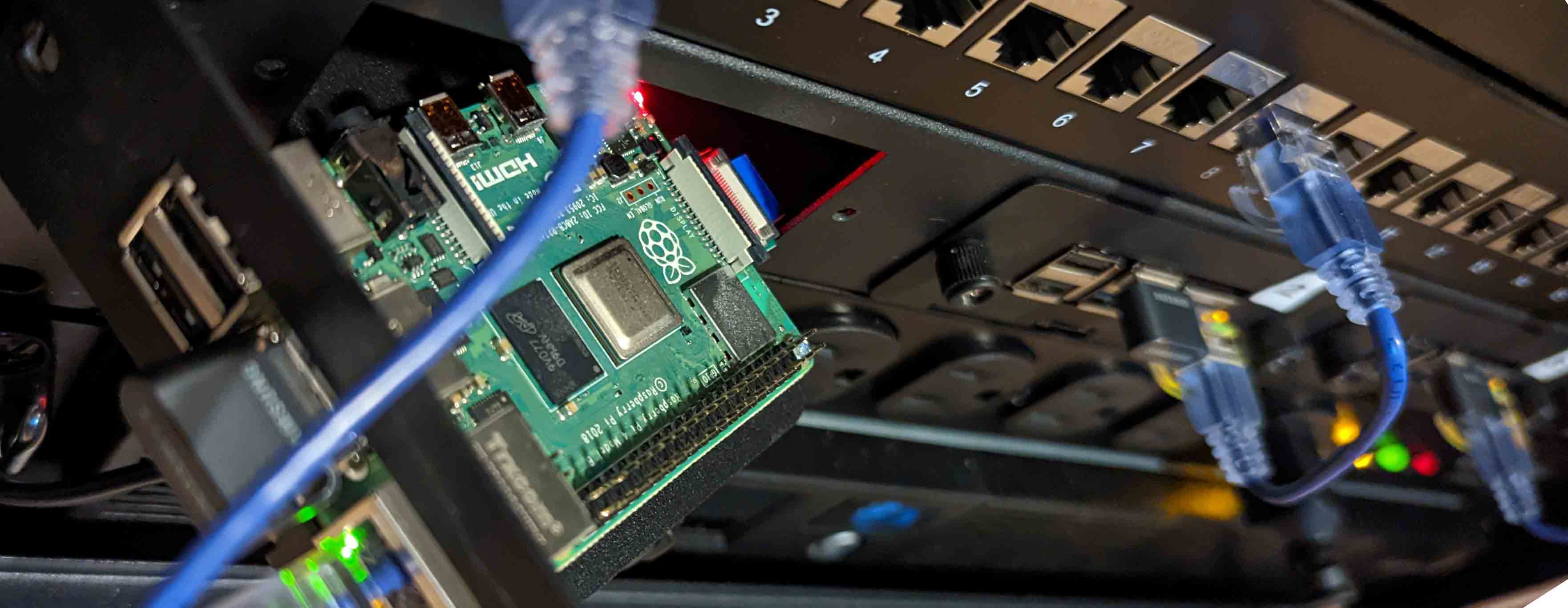I discovered that my cloud-init solution for my bare metal servers needed to be modified for the Raspberry Pi.
My original post goes to great lengths to explain all the components involved and even includes a section explaining what the differences are between that approach and this one.
TL;DR
Use a cloud-init configuration file on a Ubuntu 22.04 Raspberry Pi image. The end result is a Raspberry Pi host that boots to your exact specification and settings – like trusted SSH public keys.
If you feel lost, check out the longer post for cloud-init on bare metal.

Prerequisites
- USB with 4GB+ storage
- An Ubuntu 22.04 LTS host with USB ports
The commands I use are tested on a “real” Ubuntu host.
Note
I have set up fixed IPs for each of my Pi’s. They always rebuild with the same IP and I don’t have to update my inventory. Ensure you have a way to learn the IP address or enable SSH.
Get the latest image
Go to the 22.04 releases page and scroll down (or CTRL+F for preinstalled-server-arm64+raspi).
# set the URL for the file named `ubuntu-VERSION-preinstalled-server-arm64+raspi.img.xz`
export IMG="https://cdimage.ubuntu.com/releases/22.04/release/ubuntu-22.04.1-preinstalled-server-arm64+raspi.img.xz"
wget $IMG
Write the OS image to a USB
Take the downloaded compressed image and write it to a USB. See my other post about identifying which USB device is which.
I use xz, a general-purpose data compression tool, to extract the image while writing it to the USB.
export FILE="ubuntu-22.04.1-preinstalled-server-arm64+raspi.img.xz"
# REPLACE WITH YOUR USB (`lsblk`)
export USB="/dev/sda"
# `-d` decompress `<` redirect $FILE contents to expand `|` sending the output to `dd` to copy directly to $USB
xz -d < $FILE | sudo dd bs=100M of=$USB status=progress
Tip
Using the “pi-imager” with one of the generic SD adapters seemed to TAKE FOREVER. I think it’s very worth spending the $10 on a USB 3.0 adapter of your choice and using the CLI.
The USB is now considered a “bootable” OS disk. Before doing so, we want to change a couple of files to “pre-seed” the installation answers.
When we copied the image, partitions were created, and we’re looking for the system-boot partition. If you’ve set up Raspberry Pi’s before, this is similar to boot.
# make a directory to mount the USB to
mkdir /tmp/pi-disk
Mount the USB to configure cloud-init
For me, sda1 appears to be the first partition copied from the image, it’s the same as mounting system-boot.
mount /dev/sda1 /tmp/pi-disk
Create the user-data file
By default, there’s a full example user-data file in the root directory (cat /tmp/pi-disk/user-data).
When creating a user-data file it’s important to understand what parameters are available to you. The official cloud-init docs have an awesome set of complete examples.
Sample user-data file
cat <<'EOF' > user-data
#cloud-config
groups:
- cloud-users
# create user with the name/password of ubuntu/ubuntu
users:
- name: ubuntu
primary_group: ubuntu
groups: users
lock_passwd: false
# "ubuntu" - created with `docker run -it --rm alpine mkpasswd --method=SHA-512`
passwd: "$5$r3Kl6AKBqjA78VCX$4.Vuc56PR2faX3vLuqBxHxF796qiLhxuS4MacXtTt5C"
EOF
Feel free to use the above for testing.
My exact user-data file
Warning, the following file installs my public keys as authorized users on the target device. If you use my exact config, you won’t be able to log in.
| cat <<'EOF' | sudo tee /tmp/pi-disk/user-data | |
| #cloud-config | |
| ssh_pwauth: false | |
| # Create my user & SSH keys | |
| users: | |
| - name: jangel | |
| groups: [sudo] | |
| sudo: ALL=(ALL) NOPASSWD:ALL | |
| ssh_import_id: gh:jimangel | |
| runcmd: | |
| - printf "ubuntu-host-$(openssl rand -hex 3)" > /etc/hostname | |
| - printf "Ubuntu 22.04 LTS \nIP - $(hostname -I)\n" > /etc/issue | |
| EOF |
# automatically overwrites the default file
curl -fsSL https://gist.githubusercontent.com/jimangel/72a4d140e7fbde1b7e7fd64f286a17e8/raw/b58dbff7a30bf8451019cfcf456392da4afab166/pi-user-data -o /tmp/pi-disk/user-data
# unmount the disk if done
umount /tmp/pi-disk/
Boot the Raspberry Pi
If things go according to plan, boot, and you can SSH in.
Note
If you’re watching the progress on a screen, you might see a login before cloud-init is finished – give it a few minutes before attempting to access.
Tips
I ran into a couple of configuration questions that I had to look up.
Where is config.txt on Ubuntu Pi?
config.txt, used like a BIOS to configure Pis, is located in the /system-boot/ folder partition.
Where is cmdline.txt on Ubuntu Pi?
cmdline.txt a plain text file used by the Raspberry Pi to pass parameters to the kernel. It is also located in the /system-boot/ folder partition.
